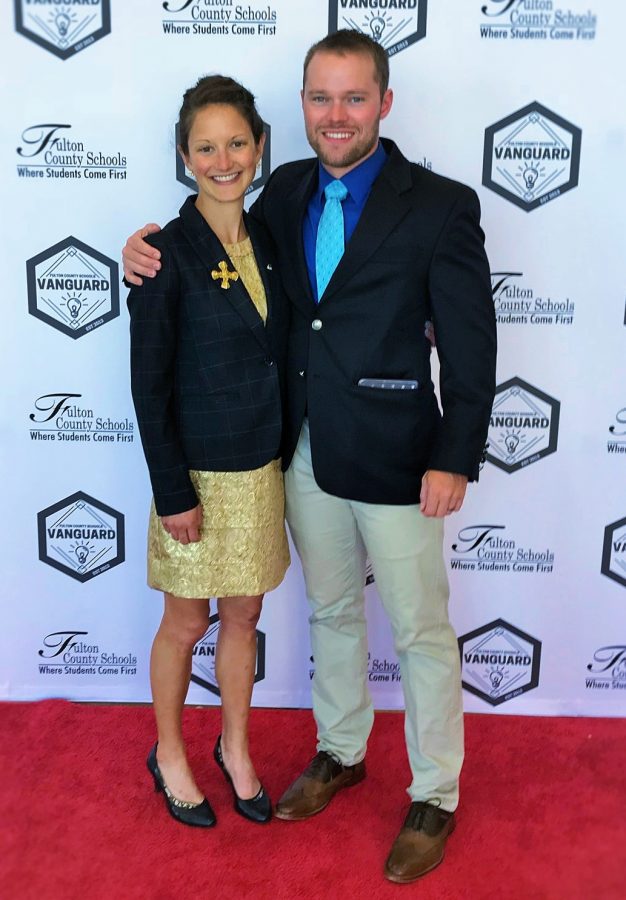Embracing The Future Classroom: An Approach to Using Technology
OPINION: Our first guest column out of three to come.
May 9, 2018
Building a technology-based classroom can change the experience for both the student and the teacher. The process does not happen overnight, but it is an experience similar to growing a garden.
You must start small, allow the seeds to sprout, thin out the things that don’t work and nurture what does.
Thankfully, this does not rely on the Georgia weather; it can happen as slowly or as quickly as you want.
Using technology in the classroom not only gives more control to the students, but it also teaches them to be responsible and active citizens of the classroom and beyond.
In my case, teaching with technology has taught me more about myself and my teaching than any other experience.
Whatever the case may be, whether we decide to embrace it or not, technology is our future.
First, trying technology has taught me to be bold and be willing to make mistakes in my classroom.
As a teacher still early in my career, it is difficult at times to show my fallibility to the students, but making mistakes and failing with my students has made me a better teacher.
Every time I try something new, I tell my students. They typically are willing test subjects for whatever I have recently learned in a conference or professional learning.
The most important aspect of teaching in this way is allowing your students to “grade” you. One should ask for feedback and accept it with openness. The kids will be honest, and they will appreciate having a voice.
Second, bringing technology into the classroom has made it a more student-centered place.
The key feature to this is the continual and meaningful feedback that students can get via the online learning platforms.
Students can easily and frequently take a formative assessment using an online quiz platform such as Google Forms, Microsoft Forms, quizzes, etc. These platforms allow students to answer questions at their own pace, see what they missed, (soon after), and then know what areas to study and seek help on.
With this in mind, we learn best from our errors, as studies have shown that human brains learn best through frequent assessment of material and learning from mistakes.
Technology also makes the classroom a more student-centered place during periods of whole-class direct instruction.
An example of this would be the platform Nearpod, which allows teachers to “lecture” more in-depth questions based on the content they are teaching. In addition, teachers can see in real time whether or not the students are grasping the material.
This provides a new medium for teachers of all areas to dive into what students are thinking, along with the chance to clear up any misunderstood material immediately.
Additionally, technology gives students opportunities that they would not otherwise have a shot at doing, such as virtual labs and field trips. These are two opportunities that can become a major part of a more “experience based” learning, as students are able to try and see things that have in the past been too time intensive, costly and potentially hazardous.
Even though these virtual experiences will never replace the real thing, they provide a close substitute to reach students who struggle with connecting to the traditional classroom.
One of the major qualms that I personally had when I started to transform my classroom to use more technology was phones and distractions.
This remains a daily hurdle.
I cannot expect my students to be able to get their work done on problematic school devices without allowing them open access to their phones, so that they may troubleshoot these such problems.
While it does get quite abused frequently, it does mean that I have to give up some control, pick my battles and be aware of what my students are doing as much as possible.
(It means I do not sit down!)
At the same time though, allowing students open access to their phones flips the responsibility of learning to them. If someone really doesn’t want to learn, then they’ll still be on their phone despite the repeated attempts to get on task. No matter the case, it happens with or without technology present.
With this in mind, it is my stance that we’re teaching our students to be responsible young adults, and part of this is allowing them to make the occasional easy (but wrong) choice, and show there are consequences that’ll result out of them.
I see the future classroom as one that embodies a student-driven-approach to learning, as with knowledge being readily available and more accessible than ever before, it is up to the students to learn many things in a more independent and active manner than past generations.
The teacher’s role in all of this becomes no less active or important; perhaps even more vital in the future.
In conclusion, today’s teens need role models that are willing to make mistakes and learn from them on a frequent basis, for it is in failing that we learn to better ourselves and grow.
One of my favorite quotes is “the time comes when the risk it takes to remain tight inside the bud is more painful than the risk it takes to grow.”
The future is changing and we, as educators, are called to grow with it.
Science Teacher Leanne Vaughn teaches Physical Science and Chemistry and is also a member of Fulton County Schools’ Vanguard team.
